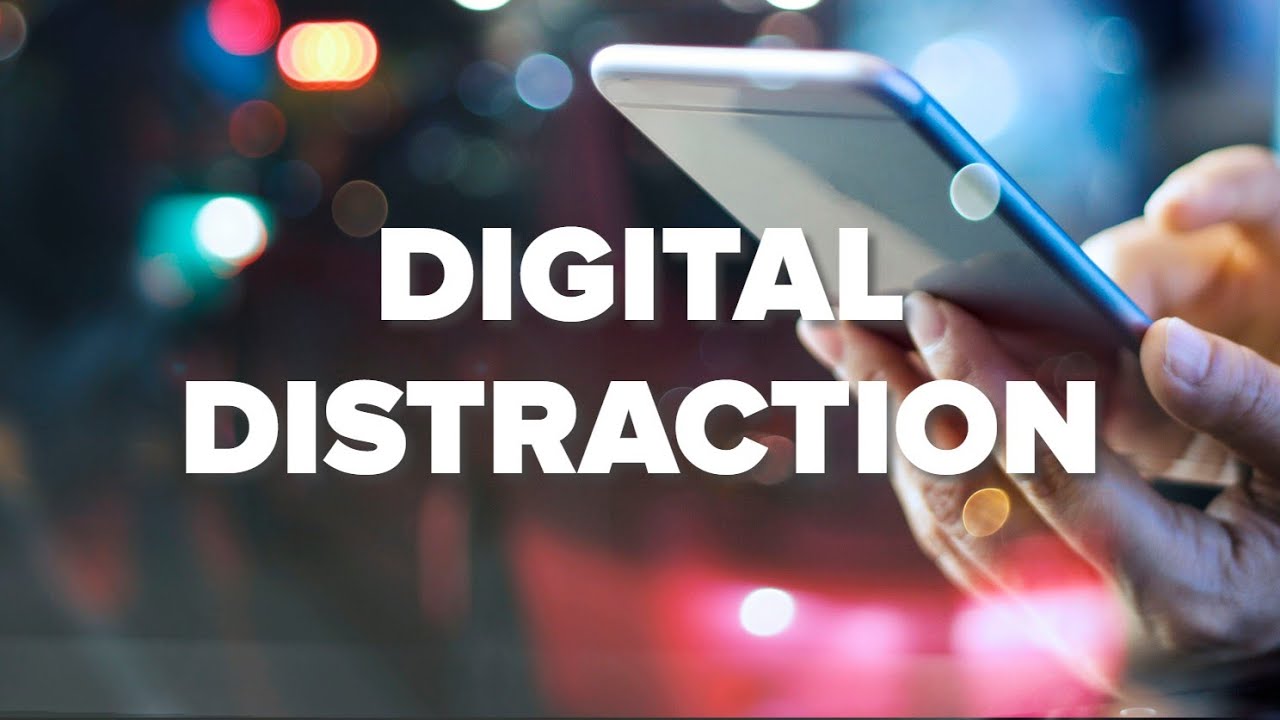Introduction: When Screens Replace Smiles
Once upon a time, couples ended their days by talking, laughing, or simply enjoying silence together. Today, however, many marriages end their nights with the cold glow of separate screens. Instead of pillow talk, there’s endless scrolling. Instead of shared laughter, there are TikTok reels and unread emails.
This isn’t harmless—it’s a growing issue psychologists call digital distraction. While smartphones, laptops, and social media help us stay connected to the outside world, they often create emotional distance inside marriages. Partners may sit side by side yet feel worlds apart.
But here’s the hopeful truth: technology doesn’t have to destroy connection. With awareness, boundaries, and new habits, couples can use it intentionally and rebuild what’s been lost. This article dives deep into the problem of digital distraction, its silent costs, and the practical ways couples can reconnect offline and restore intimacy.
Understanding Digital Distraction in Marriage
Digital distraction is the interference of technology in moments that should belong to your spouse. It’s not about using devices—it’s about how, when, and why they’re used.
Typical examples include:
- Checking Instagram during dinner.
- Watching Netflix on separate devices in bed.
- Interrupting conversations to respond to work emails.
- Choosing gaming over date night.
The problem isn’t technology itself—it’s its unchecked presence. A partner may intend to “just check one notification” but end up lost for hours. Over time, these micro-disconnections pile up, creating an emotional gap.
The Silent Damages of Digital Distraction
Digital distraction chips away at relationships quietly. Unlike loud arguments, its damage shows up gradually.
1. Emotional Distance
When your spouse feels second to a screen, emotional closeness fades. Instead of being each other’s first audience, partners become passive roommates.
2. Weak Communication
Quick replies replace meaningful dialogue. “How was your day?” becomes a half-hearted question answered while scrolling.
3. Eroded Intimacy
Physical intimacy relies on emotional connection. When phones dominate evenings, affection feels forced or neglected.
4. Resentment and Insecurity
A distracted partner often makes the other feel unimportant. Resentment builds, and insecurity grows—What’s on their phone that’s more important than me?
5. Trust Issues
Secrecy around devices—locked screens, hidden apps, or late-night scrolling—creates suspicion even when there’s no betrayal.
👉 A 2023 Pew Research Center study showed that over half of partnered adults feel ignored due to phone use. This isn’t just about distraction—it’s about dignity and emotional safety.
Signs Your Marriage Is Struggling with Digital Distractions
Digital distraction creeps in slowly. At first, it looks harmless—checking a notification during dinner, replying to an email before bed. But over time, these small habits chip away at connection. Many couples don’t realize the extent of the damage until they feel more like roommates than lovers.
Here are the most telling signs that digital distraction is silently hurting your marriage:
1. Conversations Feel Interrupted or Rushed
Every time your spouse speaks, a notification dings. Instead of finishing stories, you both cut conversations short to glance at screens. This leaves one or both partners feeling unheard and undervalued.
Example: You’re sharing something important, and your spouse says, “Hold on, let me just reply to this.” The moment is lost.
2. Quality Time Turns into Screen Time
Moments that should belong to the two of you—meals, walks, bedtime—are dominated by devices. Instead of bonding, each partner escapes into separate online worlds.
Warning sign: You spend evenings together, but without truly being with each other.
3. Arguments About Device Use Keep Surfacing
Frequent fights about phones, gaming, or social media use point to a deeper issue. It’s not just about the device—it’s about feeling neglected.
Pattern: One partner says, “You’re always on your phone,” while the other insists, “I just need to relax.”
4. Emotional Intimacy Feels Distant
Marriage thrives on vulnerability, eye contact, and shared presence. When screens dominate, intimacy suffers. Conversations grow shallow, and couples stop sharing dreams, fears, or personal struggles.
Result: You may feel emotionally closer to online friends than your spouse.
5. One Partner Feels Invisible or Unimportant
When a device always wins attention, the neglected spouse often feels second place. Over time, this leads to resentment, loneliness, and questioning their worth in the relationship.
Example: You dress up for a date, but your spouse spends more time checking notifications than noticing you.
6. Shared Routines Are Consistently Interrupted
Meals, bedtime, or weekend rituals are constantly broken by work emails, scrolling, or spree-watching. Over time, these routines lose meaning, leaving the relationship without structure.
7. Trust Issues Begin to Emerge
Secrecy around devices—hiding screens, deleting messages, or using phones late into the night—can spark suspicion. Even if nothing inappropriate is happening, the secrecy itself damages trust.
8. Loneliness While Together
Perhaps the most painful sign: feeling alone even while sitting next to your spouse. This “together but apart” feeling is one of the clearest indicators that digital distraction has taken root.
Quick Snapshot: Red Flags at a Glance
| Healthy Behavior | Sign of Struggle |
|---|---|
| Phones aside during meals | Notifications checked mid-conversation |
| Shared laughter in the evenings | Silent scrolling side by side |
| Arguments resolved with dialogue | Frequent fights about screen time |
| Eye contact and emotional sharing | Shallow talk dominated by distractions |
| Trust through openness | Secrecy or defensiveness around device use |
Key Insight: Digital distraction isn’t just about devices—it’s about priorities. When screens come before presence, the relationship suffers. Noticing these signs early gives couples a chance to reset before disconnection turns into long-term damage.
Comparison: Digital Distraction vs. Offline Connection
| Digital Distraction | Offline Connection |
|---|---|
| Phones on the dinner table | Eye contact and conversation at meals |
| Scrolling in bed until midnight | Pillow talk and cuddles before sleep |
| Watching separate shows on devices | Sharing a movie together |
| Checking emails mid-conversation | Listening fully with undivided attention |
| Gaming alone for hours | Playing board games or shared hobbies |
Reconnecting Offline: Step-by-Step Strategies
The path back to connection isn’t about eliminating technology—it’s about balancing it. Reconnecting offline is a process of choosing presence over pixels.
1. Redefine Sacred Spaces
Create tech-free zones where your marriage takes priority.
- Dining table: No phones during meals.
- Bedroom: Keep devices out to preserve intimacy and sleep.
- Living room (specific hours): Dedicate evenings to one another.
This boundary tells your spouse: You matter more than my screen.
2. Build Consistent Rituals
Relationships thrive on shared rhythms. Rituals create safe spaces for connection without distractions.
- Morning check-ins over coffee.
- Evening walks instead of TV.
- A nightly gratitude exchange.
- Weekly date nights, phones off.
These rituals may seem small, but they act as glue in marriage.
3. Use Technology as a Bonding Tool
Not all digital use is harmful. When used together, it can strengthen connection.
- Stream a documentary and discuss it.
- Take an online course as a couple.
- Build a joint Pinterest board for dream trips.
- Play multiplayer games as partners.
The key: shared use, not isolated scrolling.
4. Practice Presence in Conversations
Real connection happens when partners feel heard. Active listening requires full attention.
- Put devices away before important talks.
- Look into your spouse’s eyes.
- Repeat back what you heard.
- Avoid multitasking—it signals disinterest.
Listening isn’t passive—it’s proof of love.
5. Schedule Digital Detoxes
Couples can benefit from intentional breaks from technology.
Ideas:
- One evening a week: no phones, only conversation or shared activity.
- Monthly offline outings—hiking, cooking, dancing.
- Tech-free vacations to restore intimacy.
Detoxing resets habits and reminds couples how rich offline life can be.
6. Replace Distraction with Shared Goals
Time lost to screens can be redirected toward meaningful projects.
- Cooking new recipes together.
- Planning financial or lifestyle goals.
- Volunteering as a team.
- Starting a small side business or hobby.
When couples unite on goals, their bond strengthens naturally.
Comparison: Isolated Tech Habits vs. Couple-Centered Alternatives
| Isolated Tech Habit | Couple-Centered Alternative |
|---|---|
| Scrolling social feeds alone | Sharing and discussing news together |
| Watching YouTube separately | Taking an online cooking class together |
| Gaming solo | Playing interactive couple games |
| Online shopping individually | Planning purchases jointly |
| Streaming shows separately | Hosting a movie night together |
When Technology Turns into a Marriage Wedge
Technology in itself isn’t the enemy of marriage. In fact, it can be a blessing—helping couples stay connected across long distances, share memories, or even learn new skills together. The real danger comes when technology stops being a tool and starts becoming a barrier. That’s when it shifts from helpful to harmful, quietly driving a wedge between two people who love each other.
This wedge doesn’t happen overnight. It grows slowly, fueled by habits, secrecy, and misplaced priorities. Below are the ways technology can transform from a bridge into a dividing wall in marriage.
1. When Screens Compete with Presence
The simplest sign of a tech wedge is when a partner feels like they’re competing with a device for attention. If scrolling social media, answering emails, or gaming constantly interrupts face-to-face connection, the device becomes a third wheel in the relationship.
Impact: The neglected partner feels secondary, unseen, or undervalued. Over time, resentment builds, making small arguments explosive.
2. When Online Habits Replace Intimacy
Intimacy requires vulnerability, touch, and emotional presence. Technology can easily intrude here—whether it’s late-night scrolling instead of cuddling, or spree watching shows instead of talking.
Examples include:
- Using phones in bed until sleep takes over.
- Substituting online chats or forums for spousal conversations.
- Spending weekends gaming rather than engaging in shared activities.
This isn’t just about lost time; it’s about lost opportunities for connection.
3. When Secrecy Creates Suspicion
One of the most damaging wedges is secrecy. Hidden apps, locked screens, deleted messages, or defensive behavior around devices can plant seeds of doubt, even if no betrayal has occurred.
Why it’s harmful: Trust is the foundation of marriage, and secrecy around devices signals to your partner that there’s something you don’t want them to see. Even innocent actions can appear suspicious when transparency is missing.
4. When Work Invades Every Corner of Life
Technology has blurred the line between work and home. Smartphones mean emails, Slack messages, and project updates follow us everywhere—even the dinner table.
Problem: When work devices take priority over family moments, the marriage suffers. A spouse may feel like they’re competing with a boss or a client for attention.
Result: Burnout, resentment, and an imbalance between professional and personal priorities.
5. When Escapism Becomes Addiction
There’s a difference between relaxation and avoidance. Relaxing with a show or a podcast is healthy. But when devices become an escape from communication, conflict, or responsibilities, technology turns into a wedge.
Warning signs of escapism include:
- Spending hours online to avoid difficult conversations.
- Choosing games or social media over resolving conflicts.
- Using technology to numb stress instead of sharing it with your spouse.
This avoidance creates emotional distance, leaving issues unresolved and trust weakened.
6. When Children Notice the Divide
Children are often the silent observers of tech wedges in marriage. They notice when one parent looks at a screen instead of their partner, or when family dinners feel more like phone breaks than bonding.
Consequences: Kids may internalize the idea that screens are more important than relationships, repeating the cycle in their own lives. A wedge in your marriage can ripple into family dynamics.
The Difference Between Balance and a Wedge
To make this clearer, here’s a comparison:
| Healthy Tech Use | Tech as a Wedge |
|---|---|
| Using apps to plan a family trip | Secret late-night chats with hidden apps |
| Watching a movie together | Watching separate shows in silence |
| Video calling family abroad | Ignoring your spouse for constant scrolling |
| Work emails set to “Do Not Disturb” after hours | Work emails at dinner or in bed |
| Playing games as a couple | Gaming alone for hours daily |
The Turning Point: Awareness and Choice
The wedge doesn’t mean the marriage is doomed—it means change is urgent. The good news is that once couples recognize these patterns, they can take steps to close the gap:
- Prioritize presence: Put devices aside during meals, bedtime, or conversations.
- Rebuild transparency: Share passwords or device habits if secrecy is an issue.
- Set work boundaries: Define tech-free hours when family comes first.
- Replace escapism with openness: Talk through problems instead of hiding in screens.
The wedge only grows when it’s ignored. Choosing awareness and intentional habits can turn technology back into a tool for connection instead of division.
Key takeaway: Technology becomes a marriage wedge when it replaces presence, intimacy, and transparency. The real challenge isn’t the device in your hand—it’s the choice between looking at a screen and looking into your partner’s eyes.
Choosing Connection Over Distraction
Digital distraction may be a modern epidemic, but it isn’t undefeatable. Marriages are not destroyed by technology itself—they are weakened when presence is replaced by pixels. By reclaiming sacred spaces, building rituals, and prioritizing eye contact over notifications, couples can rewrite their story.
The decision is simple but powerful: choose your partner over your phone. Because no notification, no email, and no video is worth more than the person sitting beside you.





